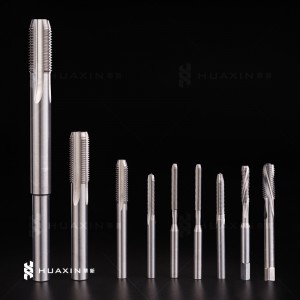Selecting the appropriate tool material is crucial for optimizing machining performance, extending tool life, and ensuring high-quality finishes. With numerous tool material choices available, understanding the properties and applications of each can help you make informed decisions. Here’s a comprehensive guide on how to choose the right tool material to meet your specific machining needs.
1. Understand the Workpiece Material
The first step in choosing the right tool material is to consider the material of the workpiece. Different materials require different tool properties:
- **Aluminum and Non-Ferrous Metals**: These materials are typically softer and require tools with high sharpness and reduced friction. Carbide tools with specific coatings like TiAlN or DLC are excellent choices.
- **Steel and Stainless Steel**: Harder materials need tools with high toughness and wear resistance. High-speed steel (HSS) and cobalt alloys, often coated with TiN or TiCN, are suitable for these applications.
- **Hard Materials (e.g., Titanium, Inconel)**: For machining superalloys and hard metals, cubic boron nitride (CBN) tools and carbide tools are preferred due to their exceptional hardness and heat resistance.
2. Consider the Machining Operation
Different machining operations, such as milling, turning, drilling, or reaming, place varying demands on the tool material:
- **Milling**: Requires tools that can withstand intermittent cutting forces. Carbide and ceramic tools are often used for their high hardness and wear resistance.
- **Turning**: Depending on the speed and material, HSS or carbide inserts are commonly used. For high-speed turning, carbide is preferred.
- **Drilling**: The tool material must handle both axial and radial forces. Carbide-tipped drills provide excellent performance and longevity.
- **Reaming**: Precision finishing operations like reaming demand high-quality HSS or carbide tools for smooth and accurate results.
3. Evaluate Tool Material Properties
Each tool material has unique properties that make it suitable for specific applications:
- **High-Speed Steel (HSS)**: Offers good toughness and shock resistance, making it ideal for general-purpose machining. It’s less hard than carbide but more affordable.
- **Carbide**: Known for its hardness and wear resistance, carbide is ideal for high-speed operations and machining hard materials. It also maintains sharpness longer than HSS.
- **Cobalt Alloys**: Enhance the hardness and heat resistance of HSS, making them suitable for tougher materials and higher speeds.
- **Ceramics**: Provide extreme hardness and heat resistance, perfect for high-speed machining of cast iron and hardened steels.
- **Cubic Boron Nitride (CBN)**: Almost as hard as diamond, CBN is ideal for ultra-hard materials like hardened steels. It offers excellent wear resistance and thermal stability.
- **Polycrystalline Diamond (PCD)**: Best for non-ferrous metals, composites, and abrasive materials. PCD tools offer the highest hardness and wear resistance but are more expensive.
4. Consider Coating Options
Tool coatings enhance performance by reducing friction, increasing hardness, and providing thermal protection:
- **Titanium Nitride (TiN)**: Increases tool hardness and reduces wear. Suitable for general-purpose applications.
- **Titanium Carbonitride (TiCN)**: Offers higher hardness and wear resistance than TiN, ideal for harder materials.
- **Titanium Aluminum Nitride (TiAlN)**: Provides excellent heat resistance, perfect for high-speed and dry machining.
- **Diamond-Like Carbon (DLC)**: Reduces friction and increases wear resistance, suitable for aluminum and other non-ferrous metals.
5. Balance Cost and Performance
While higher-performance materials like carbide, CBN, and PCD offer significant advantages, they also come at a higher cost. It’s important to balance the cost of the tool with the performance benefits and the specific requirements of your machining operation.
- For general-purpose and lower-speed operations, HSS and cobalt tools are cost-effective choices.
- For high-speed, high-precision, or hard material machining, investing in carbide or advanced materials like CBN and PCD can yield better long-term results.
## Conclusion
Choosing the right tool material involves evaluating the workpiece material, the machining operation, the properties of various tool materials, and the available coatings. By considering these factors, you can select a tool that maximizes performance, extends tool life, and ensures high-quality machining outcomes. Make informed decisions to achieve efficiency and precision in your machining processes.
With this guide, you can gain a deep understanding of how to choose the right tool material, thereby achieving optimal results in machining. This not only helps improve production efficiency but also significantly reduces tool costs, ensuring you stay ahead in a competitive market.
Zhuzhou Huaxin Cemented Carbide Tools Co., Ltd. stands out for its superior product quality and expert services. As a leader in the industry, Huaxin not only offers a wide range of high-quality tools but also provides customized solutions for clients. Their products are extensively used in automotive manufacturing, aerospace, mold processing, and other industries, earning widespread acclaim.
Choosing Zhuzhou Huaxin Cemented Carbide Tools Co., Ltd. is like selecting a reliable partner for your workshop. They not only supply high-quality products but also offer professional technical support and after-sales service, ensuring your tools are always in optimal condition. The Huaxin team will accompany you through every step of the machining process, from tool selection to process optimization, troubleshooting, and maintenance, providing comprehensive support.
With Zhuzhou Huaxin, you’re not just purchasing a cemented carbide tool; you’re investing in a commitment to quality and a guarantee of success. Opt for Huaxin and let your production line dance with efficiency and precision, making it your most distinguished feature.
Post time: May-16-2024



